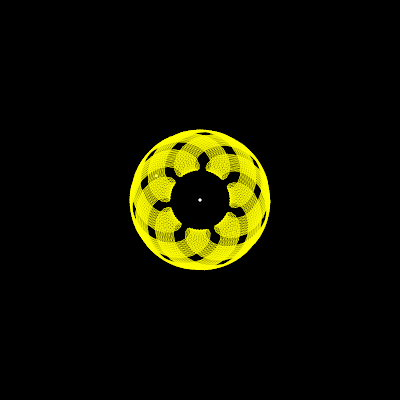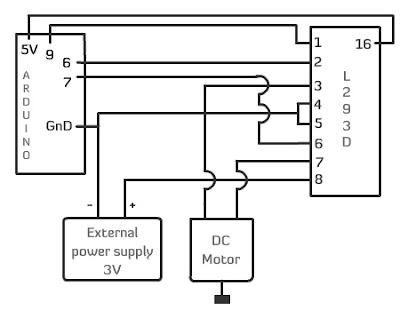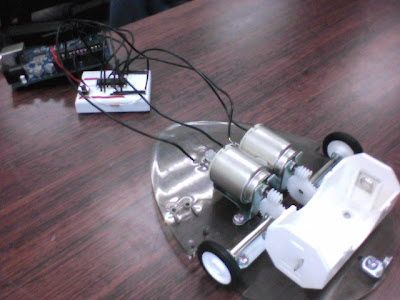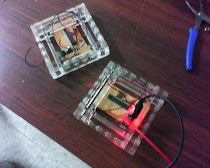RECEIVER:
int ir_pin = 7; //Sensor pin 1 wired through a 220 ohm resistor
int led_pin = 9; //"Ready to Recieve" flag, not needed but nice
int debug = 0; //Serial connection must be started to debug
int start_bit = 2000; //Start bit threshold (Microseconds)
int bin_1 = 1000; //Binary 1 threshold (Microseconds)
int bin_0 = 400; //Binary 0 threshold (Microseconds)
int lll=0;
void setup() {
pinMode(led_pin, OUTPUT); //This shows when we're ready to recieve
pinMode(ir_pin, INPUT);
digitalWrite(led_pin, LOW); //not ready yet
Serial.begin(9600);
}
void loop() {
int key = getIRKey(); //Fetch the key
Serial.print("Key Recieved: ");
Serial.println(key);
if(key==1301&&lll==0)
{digitalWrite(10, HIGH); lll=1;}
else if(key==1301&&lll==1)
{digitalWrite(10, LOW); lll=0;}
delay(1000);
}
int getIRKey() {
int data[12];
digitalWrite(led_pin, HIGH); //Ok, i'm ready to recieve
while(pulseIn(ir_pin, LOW) < 2200) { //Wait for a start bit
}
data[0] = pulseIn(ir_pin, LOW); //Start measuring bits, I only want low pulses
data[1] = pulseIn(ir_pin, LOW);
data[2] = pulseIn(ir_pin, LOW);
data[3] = pulseIn(ir_pin, LOW);
data[4] = pulseIn(ir_pin, LOW);
data[5] = pulseIn(ir_pin, LOW);
data[6] = pulseIn(ir_pin, LOW);
data[7] = pulseIn(ir_pin, LOW);
data[8] = pulseIn(ir_pin, LOW);
data[9] = pulseIn(ir_pin, LOW);
data[10] = pulseIn(ir_pin, LOW);
data[11] = pulseIn(ir_pin, LOW);
digitalWrite(led_pin, LOW);
if(debug == 1) {
Serial.println("-----");
}
for(int i=0;i<11;i++) { //Parse them
if (debug == 1) {
Serial.println(data[i]);
}
if(data[i] > bin_1) { //is it a 1?
data[i] = 1;
} else {
if(data[i] > bin_0) { //is it a 0?
data[i] = 0;
} else {
data[i] = 2; //Flag the data as invalid; I don't know what it is!
}
}
}
for(int i=0;i<11;i++) { //Pre-check data for errors
if(data[i] > 1) {
return -1; //Return -1 on invalid data
}
}
int result = 0;
int seed = 1;
for(int i=0;i<11;i++) { //Convert bits to integer
if(data[i] == 1) {
result += seed;
}
seed = seed * 2;
}
return result; //Return key number
}
SENDER:
http://www.arduino.cc/cgi-bin/yabb2/YaBB.pl?num=1209565937
















